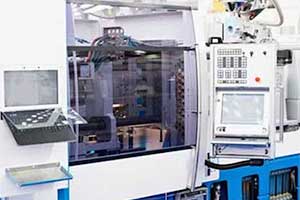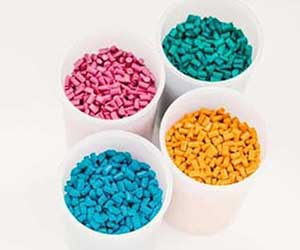 Plastic injection molding is one of the most common forms of manufacturing. In any room you walk into, you can find several products that were made by injection mold. Chairs, toys, cases, disposable silverware, and keyboards are only a small portion of the vast amount of products that are made by injection mold.
Plastic injection molding is one of the most common forms of manufacturing. In any room you walk into, you can find several products that were made by injection mold. Chairs, toys, cases, disposable silverware, and keyboards are only a small portion of the vast amount of products that are made by injection mold.
Injection Molding vs. African Elephants
Technology of Injection Molding was Started was invented to stop the hunting of African elephants. By the 1860s, billiard balls were made from the ivory of elephant tusks. A single tusk only produces 4 to 5 balls. This devastated the elephant population.
In order to deal with the excessive hunting, the billiards manufacturer Phella and Collender Company offered a € 9500 reward (About 2.841.420 Euro in today’s currency) if someone finds an alternative sustainable solution.

Synthetic Plastics & Billiard Balls
John Wesley Hyatt, then a young inventor, took up the challenge and through years of experimentation was able to create a celluloid material, one of the first synthetic plastics created. He then developed a mold that could make billiard balls from this material, thereby helping to drastically reduce elephant poaching. In 1870, John Hyatt pioneered one of the world’s most widely used manufacturing processes – plastic injection molding. Today’s billiard balls are made from harder materials.
Basic Stages in the Process of Injection Moulding:
- Making a Mold
- Closing The Mold
- Injection – The heated softened plastic materials is injected into the mold
- Cooling – through the channels within the mold
- Ejection – ejecting the part from the mold
Three main pieces of machinery to any injection molding process, the injection unit, the mold, and the clamps that hold the mold.
Injection Unit
 Plastic granules are fed into the injection unit through a hopper. Pellets for injection molds are usually a few millimeters in diameter and can be made in a variety of colors using a special pigment material called “dye”. Some recycled plastics can also be used. The pellets are then melted.
Plastic granules are fed into the injection unit through a hopper. Pellets for injection molds are usually a few millimeters in diameter and can be made in a variety of colors using a special pigment material called “dye”. Some recycled plastics can also be used. The pellets are then melted.
The Mold
The mold is a high precision machined part. They are often made of quality steel such as Chromium. Molds normally contain 2 halves, each of which has several components. It may take dozens of hours of just machining to complete a mold. Additional hours are also needed for the programming of the CNC machines to run programs to cut the molds and other operations done to molds such as polishing. Molds can be expensive to make due to the level of time and precision it takes to get them made, but they offer a wide range of benefits including better unit costs that often outset the cost of the mold.
Clamps & Ejection
Coolant is now pumped to help increase the speed of the cooling process. As the material cools, the volume of the part is increased and the material is hardened. The clamps are released once the part is cooled. The mold will slowly open and the part is quickly ejected.
Manufacturing Revolutionized
Injection molding has revolutionized manufacturing for the world. Today, many types of plastic — of all different melting points — can be used for injection molding. This makes it a versatile solution for a wide range of industries and applications.
With something like CNC machining, every side of a part has to be cut down to size and it can be a time consuming process. Injection molds allow for parts to be made almost instantly. This cuts down significantly on labor and machine time, making high volume parts more affordable and accessible for everyone.
Success in Production
At Global Trade Specialists, we can help you get your product produced with the correct tooling. When you order with us, you retain ownership of all molds. We have decades of experience helping our customers get their parts made successfully.
